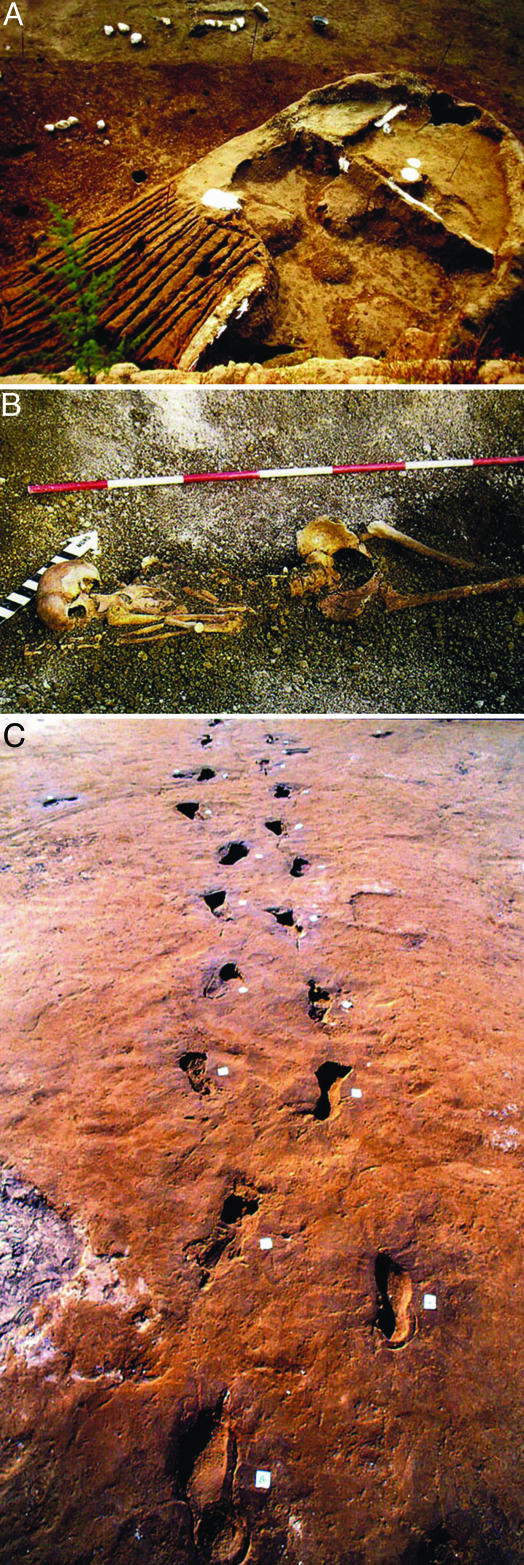Fig. 3.
Archeological evidence for the catastrophe. (A) The Old Bronze Age village of Nola. The mould of one of a group of huts found 15 km northeast of Vesuvius. The huts were partially buried under ≈1 m of fallout lapilli, 20 cm of planar surge, and 20–40 cm of flood deposit. The hut roof partially collapsed, but its interior, including pottery, was filled by surge ash and perfectly preserved. (B) One of the two human victims of the Avellino eruption found at San Paolo Belsito, near Nola. The victim, a young woman buried by 1 m of pumice lapilli, was found in a self-protecting position typical of death by suffocation. (C) Footprints of two fugitives in the surge ash deposit of the Avellino eruption, found ≈15 km NNW of Vesuvius. Thousands of footprints directed NNW away from the volcano testify to an en masse exodus from the devastated zone.

